Robert May Prize
The Methods in Ecology and Evolution (MEE) Robert May early career researcher award is named after Lord May, from the University of Oxford. The prize is awarded annually to the best paper submitted by an early career author at the start of their research career. In the absence of extenuating circumstances, ‘early career’ is defined as less than 5 years post-Ph.D. or -D.Phil. experience according to the date of your graduation certificate.
If the first author of a paper considers that they are eligible for this award, they are invited to nominate themselves during the submission process through ScholarOne Manuscripts. Those nominated are in the early stages of their research career; slightly older authors who have had their careers in ecology interrupted or have developed later, can also be considered.
The winner is selected by the Editors of MEE at the end of each year, and an announcement made early in the following year. Along with this prestigious prize, the winner receives £500 and a year’s membership to the BES, which are presented at the BES Annual Meeting in the UK, if the winner can attend.
Read the Virtual Issue bringing together the winning and shortlisted papers for the 2022 Robert May Prize. And find out about the winning and shortlisted papers for all of the other BES Journal Early Career Researcher Prizes.
For further information and informal enquiries, contact the Methods in Ecology and Evolution Assistant Editor.
Winner of the Robert May Prize 2023
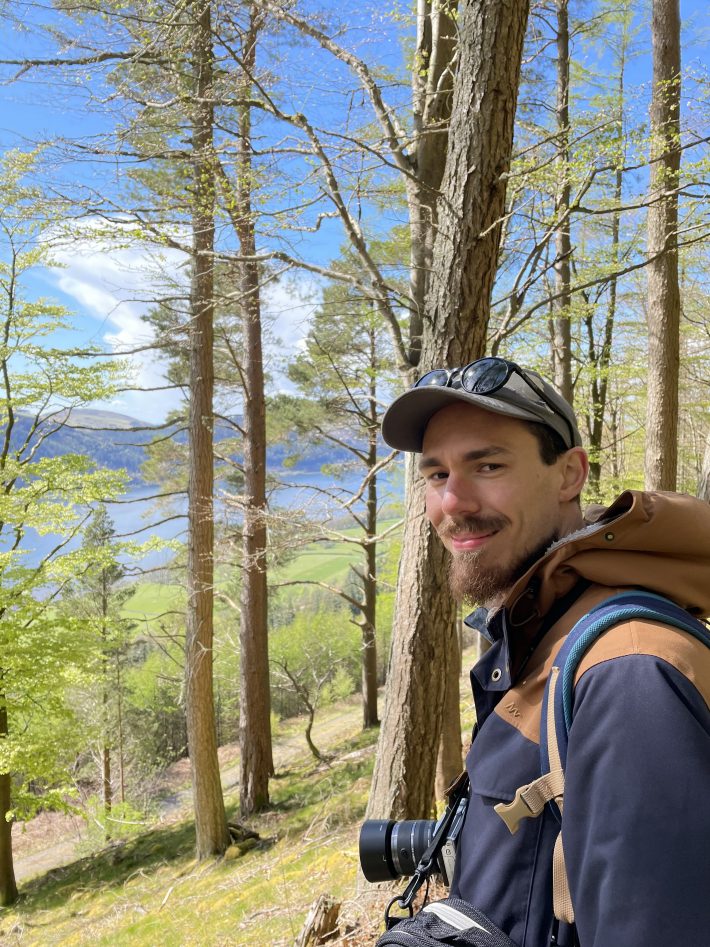
Willem Bonnaffé
Fast fitting of neural ordinary differential equations by Bayesian neural gradient matching to infer ecological interactions from time-series data. Willem Bonnaffé and Tim Coulson. (Methods in Ecology and Evolution, 14:6 pp 1543-1663)
This paper by Willem Bonnaffé and Tim Coulson introduces a novel and promising approach to unravel the mechanism behind interaction webs. Usually, interaction webs studies are limited by our tools to account for large fluctuations of predator and prey populations. Bonnaffé and Coulson (2021) already adapted the recent development of neural ordinary differential equations (Chen et al. 2018) to ecological time series; yet such methodological adaptation remained slow or even impossible to fit, limiting inferences for species interactions.
Using an elegant gradient matching set-in neural networks, Bonnaffé and Coulson created a powerful Bayesian tool to identify the key actors in interactions webs, while quantifying the strength and shape (e.g. non-linear) of those interactions. Now ecologists have at-hand a fast and robust method to decipher the functioning complex ecosystems in a matter of seconds
Winner of the Robert May Prize 2022

Tanya Strydom
Food web reconstruction through phylogenetic transfer of low-rank network representation , , , , , , , , , , , & (2022). Food web reconstruction through phylogenetic transfer of low-rank network representation. Methods in Ecology and Evolution, 13:12, 2838– 2849. https://doi.org/10.1111/2041-210X.13835
Winner of the Robert May Prize 2021

David Wilkinson
Defining and evaluating predictions of joint species distribution models
David P. Wilkinson, Nick Golding, Gurutzeta Guillera-Arroita, Reid Tingley & Michael A. McCarthy. (Methods in Ecology and Evolution, 12:3 pp 394-404)
In this paper, David and his team provided a practical guide to assess and quantify the performance of joint distribution models. So far, our methods to understand and predict species distribution models have been dominated by single species approaches. Doing so, species interactions, a backbone of ecosystem structure and community dynamics, were ignored or difficult to include in an unbiased way. Joint distribution models are now growing in popularity as a promising framework in ecology to account for species interactions and boosting the likelihood of successful wildlife management decisions. Yet how do we evaluate the validity of joint distribution models’ predictions? Using a mixture of theory, empirical examples, and easy to run and replicate scripts, David and his team provided solid guidance for ecologist starting or already using joint distribution models. David said: “Anyone working with species or communities can benefit from this method. You might need multi-species data to fit a JSDM, but you can generate predictions at the species or community level so they can be used for a variety of conservation applications. These predictions will be useful to researchers, land managers, policy makers, and more.”
Winner of the Robert May Prize 2020

Arthur Porto
ML‐morph: A fast, accurate and general approach for automated detection and landmarking of biological structures in images
Arthur Porto & Kjetil L. Voje. (Methods in Ecology and Evolution 11:4 pp 500-512)
This article presents a new approach to collecting organisms’ measurements. With potentially many measurements needed in some studies, the time taken to do this can be a major bottleneck in research.
“Taking advantage of the machine learning and state-of-the-art validation methods, the new method presented by Arthur Porto and colleagues speeds up the whole process of landmarking (identifying and measuring key parts) by orders of magnitude relative to manual measurements, with comparable accuracy.” said Rob Freckleton, Senior Editor.
Arthur Porto said: “Despite many recent advances in biology, we still spend too much time manually extracting data from images. However, the field of computer vision now offers the opportunity for us to automate image-based data collection. In our paper, we created a new, lightweight and general tool to do so.”
Winner of the Robert May Prize 2019

Corneile Minnaar
Using quantum dots as pollen labels to track the fates of individual pollen grains
Corneile Minnaar & Bruce Anderson (Methods in Ecology and Evolution, 10:5, pp 604-614)
A central component of an organism’s fitness is its ability to successfully reproduce. This includes finding a potential mate and successful mating. For plants, movement of pollen from an anther to a conspecific stigma is essential for successful reproduction, but directly tracking movement of individual pollen grains heretofore has been impossible (with the exception of those species of orchids and milkweeds whose pollen comes in large packages (pollinia)). Knowing how pollen move around, whether or not they successfully fertilize ovules, is also central to understanding the evolution and ecology of flowering plants (angiosperms) and floral traits.
As part of his dissertation work at Stellenbosch University in South Africa, Corneile Minnar used quantum dots to track pollen grains of four plant species from four different, unrelated angiosperm families. Quantum dots are extraordinarily tiny semiconductor nanocrystals that behave like atoms and emit bright visible and infrared light when exposed with an ultraviolet light source. By placing very small volumes of quantum dots suspended in hexane directly onto dehiscent anthers and following the movement of the well-attached dots to the pollen grains, Minnaar was able to track the pollen from one plant to another. The cost-effective (≈ US$ 0.02/flower) methodology that he has developed will provide new opportunities to explore central open questions in plant biology, including: the magnitude and frequency of pollen loss during various stages of the pollen movement; the importance of pollen-movement in speciation and diversification in angiosperms; the structure of pollination landscapes and competitive interactions among conspecific and heterospecific gametophytes; and the importance of specific pollinators in facilitating reproduction and persistence of plants of economic and conservation concern.
Corneile obtained his undergraduate and post-graduate degrees (BSc honours and MSc) in Zoology at the University of Pretoria, South Africa. Working in the high-tech physiology and genetics labs of his advisers, Andrew McKechnie and Catherine Sole, inspired a love for the interface between nature and technology, while his main adviser, Justin Boyles, instilled in him a multi-hypothesis and computational approach to science that remains prevalent in his work. For his PhD, Corneile moved to Stellenbosch University (South Africa) at the heart of the incredibly diverse Cape Floristic Region, where his adviser, Prof Bruce Anderson, introduced him to a beguiling array of pollination systems and intriguing questions. However, the queries that most piqued his interests could only be solved by tracking the movement of pollen grains, so he decided to develop a method to track pollen grains for his PhD. With patient support and advice from Bruce and funding from the Eva Crane foundation and NRF South Africa, the method has now been published. Corneile has since been awarded an NRF Innovation Post-Doctoral Fellowship as well as a Technology and Innovation Seed Fund grant for a patent he developed in his PhD. Corneile continues to tinker at the interface of nature and technology, working closely with industry partners such as Koppert Biological Systems and his colleague Dr Willem Augustyn to develop more sustainable and effective pollination methods.
Winner of the Robert May Prize 2018
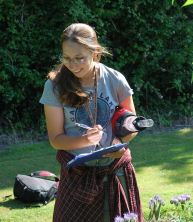
Laura Russo
Quantitative evolutionary patterns in bipartite networks: Vicariance, phylogenetic tracking or diffuse co‐evolution?
Laura Russo, Adam D. Miller, John Tooker, Ottar N. Bjornstad and Katriona Shea (Methods in Ecology and Evolution, 9:3, pp 761-772)
The study of interactions and their impacts on communities is a fundamental part of ecology and much work has been done on measuring the interactions between species and their impacts on relative abundances of species. Progress has been made in understanding the of interactions at the ecological level, however we know that co-evolution is important in shaping the structure of communities in terms of the species that live there and their characteristics.
Laura Russo and colleagues have developed a new framework for analysing the co-evolutionary basis for interactions between species. This exciting new approach depends on simultaneous mapping of interactions between species (e.g. who pollinates who, or who eats who) and the relationships between them (via taxonomy or phylogeny). The framework tests for congruence in evolutionary history across interacting groups (co-phylogeny: e.g. does the phylogeny of pollinators map onto that of the plants?). This evolutionary pattern can then be dissected to look at the roles of evolutionary history and vicariance or even eliminate coevolution as an explanation of the structure of interaction networks. The framework that Russo et al. present has many possible applications in evolutionary ecology and, of course, the data and code to repeat, apply and extend the methods are provided. It is an exciting approach and we look forward to seeing it widely used and the insights that will result.
Dr. Russo got her undergraduate degree at Oberlin College, and then her PhD at Penn State in the Biology Department and Interdepartmental Program in Ecology with Katriona Shea. She did a post-doc with Bryan Danforth at Cornell University, and later received a Marie Curie Sklodowska fellowship to conduct two years of postdoctoral research at Trinity College Dublin, with Jane Stout. She is currently an Assistant Professor in the Department of Entomology and Plant Pathology in the Institute for Agriculture at the University of Tennessee.
Winner of the Robert May Prize 2017
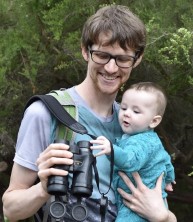
Jonathan Henshaw
A unified measure of linear and nonlinear selection on quantitative traits
Jonathan M. Henshaw and Yoav Zemel (Methods in Ecology and Evolution, 8:5, pp 604-614)
The standard approach to quantifying natural selection, developed by Lande and Arnold, does not allow for comparable metrics between linear (i.e. selection on the mean phenotype) and nonlinear (i.e. selection on all other aspects of the phenotypic distribution, including variance and the number of modes) selection gradients. Jonathan Henshaw’s winning submission provides the first integrated measure of the strength of selection that applies across qualitatively different selection regimes (e.g. directional, stabilizing or disruptive selection). This new unified method provides three important advancements. First, one can compare the overall strength of selection across traits, taxa or environments that differ qualitatively in their selection regime. This makes the method ideal for comparative and meta-analyses. Second, one can compare the strength of linear and nonlinear selection on a single trait. Third, one can quantify the strength of selection when the fitness surface is complex in shape (e.g. selection for bimodal beak size in Darwin’s finches). None of these analyses is possible under the standard framework.
During his undergraduate studies in mathematics, Jonathan took a course in evolutionary biology and was hooked. After an Honours year on the evolution of fertilisation in marine invertebrates, he completed a PhD at the Australian National University with Professors Hanna Kokko and Michael Jennions. Jonathan is currently on parental leave in Graz, Austria. In August 2018, he will begin a postdoc with Professor Adam Jones at the University of Idaho (USA), where he will study sexual selection and the evolution of sex roles.
Winner of the Robert May Prize 2016
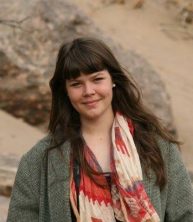
Gabriella R. M. Leighton
Just Google it: assessing the use of Google Images to describe geographical variation in visible traits of organisms
Gabriella R. M. Leighton, Pierre S. Hugo, Alexandre Roulin, Arjun Amar (Methods in Ecology and Evolution, 7:9, pp 1060-1070)
The Robert May Prize for 2016 is awarded to Gabriella Leighton for an important step in converting ecology to an armchair science. Many species (e.g. owls, hawks, bears) are difficult, time-consuming and even dangerous to observe. Moreover, well trained fieldworkers are expensive to employ. Ecology would be a lot easier if we didn’t have to spend time, energy and risk lives having to observe organisms in the field! In her paper Gabriella shows us that the internet can actually save a lot of this effort. What she did was to analyse online image data across a range of species: images taken by amateur and professional photographers, if geo-referenced, are potentially excellent sources of information on the phenotypes of species. For instance, data can be obtained this way on distributions of colour morphs or on plumage/pelage patterns. Gabriella compared data collected from google images (quick and easy!) with that collected from fieldwork (time-consuming, expensive and dangerous), and showed that the data from google images is perfectly reliable. This is an ingenious and potentially important advance: lots of data are potentially available across multiple taxa, and the possible applications in ecology and evolution are endless. To make the method accessible, Gabriella links to a web application that allows the approach to be widely implemented. Thanks to Gabriella ecology is going to be cheaper, faster and safer in the future!
Gabriella completed a BSc(Hons) in Biological Sciences at the University of Cape Town in South Africa with co-author Dr Arjun Amar as her supervisor. While the method described in the paper is based on a smaller, exploratory project undertaken the previous year, it was developed and tested further as part of her BSc(Hons) project. She has since undertaken an MSc at the same institution focusing on the urban ecology of a mesocarnivore, the caracal, on the Cape Peninsula. Gabriella currently lives in Cape Town and plans to apply for a PhD once her MSc is complete.
Winner of the Robert May Prize 2015
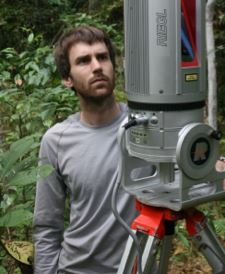
Kim Calders
Nondestructive estimates of above-ground biomass using terrestrial laser scanning
Kim Calders, Glenn Newnham, Andrew Burt, Simon Murphy, Pasi Raumonen, Martin Herold, Darius Culvenor, Valerio Avitabile, Mathias Disney, John Armston and Mikko Kaasalainen (Methods in Ecology and Evolution, 6:2, pp 198–208)
The winner of this year’s Robert May Early Career Researcher Award is Kim Calders. Kim led the work on the paper, “Nondestructive estimates of above-ground biomass using terrestrial laser scanning” with an international team of coauthors. They have developed a way to harness laser technology for use in measurements of vegetation structure of forests. The study is an important development in the monitoring of carbon stocks for worldwide climate policy-making.
Both carbon stocks and above-ground biomass are important details for the United Nations initiative on Reducing Emissions from Deforestation and Forest Degradation (UN-REDD) – a programme striving to reduce the destruction of forests and preserve the uptake of carbon by trees. Previously, weighing trees in forests was time-consuming, expensive and destructive – particularly in tropical forests where trees can be over 50m tall and weigh over 100 tonnes. As a result, all current estimates of tropical forest carbon stocks are based on a small number of weighed trees. Terrestrial laser scanning is an active remote sensing technique that can measure precise distances by sending out laser energy and then analysing the reflected energy. Also known as terrestrial LiDAR, the method allows us to measure biomass with far more certainty than before. While traditional methods yielded results that may have been off by as much as 37%, the LiDAR method developed by Calders et al. delivers over 90% accuracy. Essentially, we can now ‘weigh’ trees far more precisely and then determine their biomass.
This paper – which brings together ecologists, remote sensing scientists and mathematicians – is a great example of how international and interdisciplinary collaboration can be a catalyst for significant scientific progress in ecology and forestry. In one recent demonstration of the method, researchers collected laser scan measurements of over 1000 trees in just 10 days. The method will now be tested in forests that are potentially more important for worldwide carbon stocks than Australian forests, including tropical forests in Gabon, Peru, Indonesia and Guyana.
Kim undertook a BSc and MSc in Bioscience Engineering at the Katholieke Universiteit Leuven in Belgium. He then commenced a MSc in Remote Sensing at University College London, followed by a PhD in LiDAR Remote Sensing at Wageningen University in the Netherlands. Over the course of his PhD, he has built up expertise in 3D measurements in both a research and operational context for the monitoring of vegetation dynamics. Kim is currently employed as a postdoctoral researcher with the National Physical Laboratory and UCL, where he explores the use of 3D data for end-to-end traceability of in-situ measurements and satellite-derived essential climate variables.
Winner of the Robert May Prize 2014
Laure Gallien
The 2014 Robert May Prize winner is Laure Gallien for her paper Identifying the signal of environmental filtering and competition in invasion patterns – a contest of approaches from community ecology, co-authored with Marta Carboni and Tamara Münkemüller (Methods in Ecology and Evolution, 5: 1002–1011).
Today, biological invasions are of major concern for maintaining biodiversity. However, understanding what drives the success of invasive species at the scale of the community remains a challenge. Two processes have been described as main drivers of the coexistence between invasive and native species: environmental filtering and competitive interactions. However, recent reviews have shown that competitive interactions are rarely detected, and thus their importance as drivers of invasion success placed under question. But can this be due to pure methodological issues? Using a simulation model of community assembly, Laure and co-authors show that the infrequent detection of competition can arise from three important methodological shortcomings, and provide guidelines for future studies of invasion drivers at the scale of the community.
During her MSc in Biodiversity, Ecology and Evolution, Laure became passionate about the study of biological invasions, and decided to carry out a PhD on the ecological and evolutionary drivers of invasion with Wilfried Thuiller and Sébastien Lavergne at the Alpine Ecology Lab in Grenoble (France). She currently lives in Switzerland and works as a post-doc with Niklaus E. Zimmermann at the WSL institute, where she explores the influence of evolutionary history on extant species invasiveness.
Winner of the Robert May Prize 2013
Will Pearse
The 2013 winner is Will Pearse, for his co-authored paper phyloGenerator: an automated phylogeny generation tool for ecologists published in volume 4, issue 7 of Methods in Ecology and Evolution.
Although ecologists frequently want to make use of phylogenies, they often lack the skills to create detailed phylogenies of their study taxa. phyloGenerator greatly simplifies the process of creating a phylogeny, automating the download of DNA data and the use of modern phylogenetic software to produce a dated, defensible phylogeny. By linking together a number of existing tools into a single command-line interface and providing an extendable Python library, phyloGenerator is also a useful tool for phylogeneticists wishing to use an open, reproducible phylogenetic workflow. The Editors commented that, “this is an exciting idea that makes phylogenies almost immediately accessible to any researcher needing to use them. It is also a terrific example of the power of what we can achieve when data are made open and accessible.”
Will studied Zoology as an undergraduate at the University of Cambridge, then completed an MSc in Ecology, Evolution and Conservation, and later a PhD at Imperial College London supervised by Andy Purvis and David Roy (Centre for Ecology and Hydrology, Wallingford). His PhD focused on how the phylogeny of species in a community can be used to understand the ecological assembly of that community, and how phylogeny informs our understanding of communities undergoing change. Will is now a post-doc in Jeannine Cavender-Bares’ lab at the University of Minnesota, where he studies urban plant communities.
Winner of the Robert May Prize 2012
Sarah Papworth
The 2012 winner is Sarah Papworth, for her co-authored paper “ Movement ecology of human resource users: Using net squared displacement, biased random bridges and resource utilization functions to quantify hunter and gatherer behaviour” published in volume 3, issue 3 of Methods in Ecology and Evolution. Although GPS trackers can rapidly collect data on animal movement, methods for analysing this large amount of data are still being developed. Sarah’s paper describes a methodological framework for the analysis of GPS track records of foragers which routinely return to a central place after foraging, such as a den or nest. Her approach combines three existing methods within a flexible framework that permits accurate description of resource use and movement in humans and animals. This approach will be particularly useful for our understanding of human resource extraction and conservation planning.
Sarah studied a BA Honours in Anthropology at the University of Durham, which focused on human and primate behaviour. This lead to an interest in field biology in the tropics, and she went on to study blue monkeys in Uganda. Sarah then completed an MSc in Ecology, Evolution and Conservation, and a PhD in Conservation Science, at Imperial College London, supervised by E.J. Milner-Gulland and Katie Slocombe (University of York). Her PhD focused on human and primate behaviour within the context of hunting by the Waorani of Amazonian Ecuador, and involved extensive fieldwork. Data collected for her PhD were used to illustrate the methodological framework developed by Sarah and her co-authors in the Robert May prize-winning paper. Sarah has just moved to Singapore, where she is currently a research fellow focusing on poverty and biodiversity at the National University of Singapore.
Winner of the Robert May Prize 2011
Tyler Kuhn
The 2011 winner is Tyler Kuhn, for his co-authored paper “A simple polytomy resolver for dated phylogenies” published in volume 2, issue 5 of Methods in Ecology and Evolution. Unresolved nodes in phylogenetic trees (polytomies) have long been recognised for their influences on specific phylogenetic metrics such as topological imbalance measures, diversification rate analysis and measures of phylogenetic diversity. However, there was a need for biologically appropriate method to overcome the effects of this phylogenetic uncertainty. Tyler and co-authors present a simple approach to polytomy resolution, using biologically relevant models of diversification using free available software, BEAST and R. The paper should be useful for many future analysis of the mammalian supertree.
Raised in a small town in Canada’s far north, Tyler has always had a passion for understanding the natural world. This passion led him to the University of Victoria, where he completed his B.Sc. Honours in Earth Sciences in 2004. It was there that he discovered the world of paleontology. He returned to academia after spending several years working as a geologist to pursue his M.Sc in Quaternary paleontology. He completed this degree in 2010, focussing on the use of aDNA to improve our understanding of imperilled northern species, and to help inform management practices. During this time, he and his supervisor, Arne Mooers, became involved in a “side project” aimed at improving the usability of incompletely resolved phylogenies in conservation decision making processes. This work has since expanded far beyond his M.Sc. thesis to include several published papers, including the Robert May prize winning paper on resolving polytomies of dated supertrees. Tyler currently lives in Canada’s frigid north and works as a government biologist, paleontologist and independent researcher.
Winner of the Robert May Prize 2010
Iain Stott
The 2010 winner is Iain Stott, for his co-authored paper “On reducibility and ergodicity of population projection matrix models,” published in volume 1, issue 3 of Methods in Ecology and Evolution. This paper was picked as it reviews the assumptions of matrix projection models that are currently very widely used in applied and theoretical modelling, but shows that many models do not adhere to these assumptions. It makes some surprising findings about how key ideas of reducibility and ergodicity have been overlooked. This will be especially useful for practitioners who wish to develop and apply models.
Iain Stott undertook his undergraduate degree in Conservation Biology and Ecology at the University of Exeter’s Cornwall Campus. With the sun, sea, sand and science doing little to dissuade from staying, he continued on at the campus after graduating in 2008 to embark upon a PhD in the Centre for Ecology and Conservation under the supervision of Dr. David Hodgson and Prof. Stuart Townley.
His research focuses on models of the dynamics of populations of plants and animals. Such models are key to understanding both future population state as well as past evolutionary history, and can be manipulated and understood from new angles through employing tools borrowed from control systems engineering. Iain is interested in using such tools to improve the predictive power of population models to facilitate better conservation, and in the potential extension of such theory and methodology to other ecological and evolutionary systems. In particular, such work may help to understand the resilience of populations, species, communities and ecosystems in the face of global threats to biodiversity.
Like what we stand for?
Support our mission and help develop the next generation of ecologists by donating to the British Ecological Society.